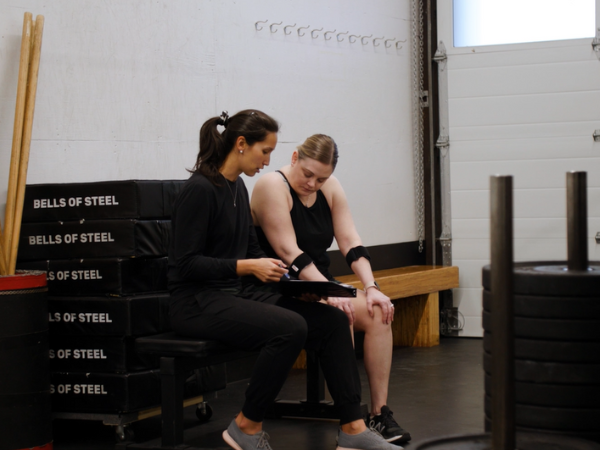Strong with Arthritis: A Strength Training Roadmap
“It was a long process to find out I had rheumatoid arthritis,” Harris said. “Initially, there wasn’t enough evidence to diagnose me, so I just lived with the pain.”
For Harris, arthritis had a major impact on her ability to be physically active and keep up with her two young kids.

Same Body; New Rules
“Pre-symptoms, I was very active. I did bootcamps, ran and was big into snowboarding,” she said. “I’m not as intense as I once was. I used to love getting that exercise high. Now, pushing myself like that would lead to a flare.”
As a trained physiotherapist, Harris turned to strength training for its many benefits, which include reducing pain, fatigue and swelling, as well as slowing muscle deterioration and lowering risk for serious complications like heart attack, stroke and diabetes.
“I started strength training because I know it’s part of a healthy body,” Harris said. “My joints also felt more supported when my muscles were stronger.”
However, Harris worried she wouldn’t have the ability to determine when she was pushing her body too far. Less than 14 per cent of people living with rheumatoid arthritis do regular strength training. Many cite fear of joint damage as a primary reason for their hesitation.
“I didn’t have any fears about strength training in general because I know it’s good for you,” Harris said. “My concerns surrounded how far I could push my workout. What amount of exercise would cause me to flare? Could strength training make a flare last longer? Would it increase damaging inflammation?”
More Resources Needed
Harris made sure to check with her doctor and physiotherapist before starting a strength training program. But when it came to locating strength training resources and guidelines specifically for people living with rheumatoid arthritis, she found almost none.
“We know strength training has many benefits and that few people with arthritis do it regularly,” said Dr. Jasmin Ma, a kinesiologist, assistant professor at the University of British Columbia and clinician investigator at Arthritis Research Canada. “That’s why we’re working to find ways to support people with arthritis to participate in strength training.”
Ma’s research project is called I START, which stands for “Improving Strength Training and Tailoring Among People with Rheumatoid Arthritis.” Her team summarized existing research, talked to patients and facilitators and almost over 50 barriers to strength training specifically for people who have rheumatoid arthritis.
“Pain and fatigue make it really hard to do strength training,” Ma said. “Medication side effects like brain fog also prevent people from remembering their strength training programs. But the barriers extend far beyond the individual. Many health and exercise professionals do not know how to provide this type of support to people with arthritis.”
Breaking Down Barriers
In addition to working to understand the challenges people with arthritis experience with strength training, Ma’s team of health experts and patient partners, including Lisa Harris, are developing a one-of-a-kind strength training toolkit.
“To our knowledge, this toolkit is the first of its kind designed to help prescribe strength training for people with rheumatoid arthritis,” Ma said. “The unique piece here is we’re not just talking about ‘what’ we prescribe, but ‘how’ we prescribe and seeing strength training as something that isn’t only the exercises we do, but a lifelong behaviour that we support.”
While this research focused on rheumatoid arthritis, the I START Toolkit stands to benefit people with all types of arthritis. Harris sees it as a necessary step in improving quality of life for everyone living with rheumatic disease.
“It’s very important to have a tool that people with arthritis can feel confident to take to a Pilates, yoga or fitness studio, so that exercise professionals can accommodate us appropriately and ensure we’re not hurting ourselves or causing additional flares,” Harris said.
Ma emphasized that developing a strength training prescription for anyone has to be a partnership between the person and their exercise professional and the I START Toolkit can help with this. She also stressed that strength training, even high intensity strength training, is safe for people with arthritis when prescribed appropriately.
“To anyone who’s feeling intimidated to start strength training, I’d say start small because any little step that you do is better than what you did yesterday if you did nothing,” Harris said.


























































